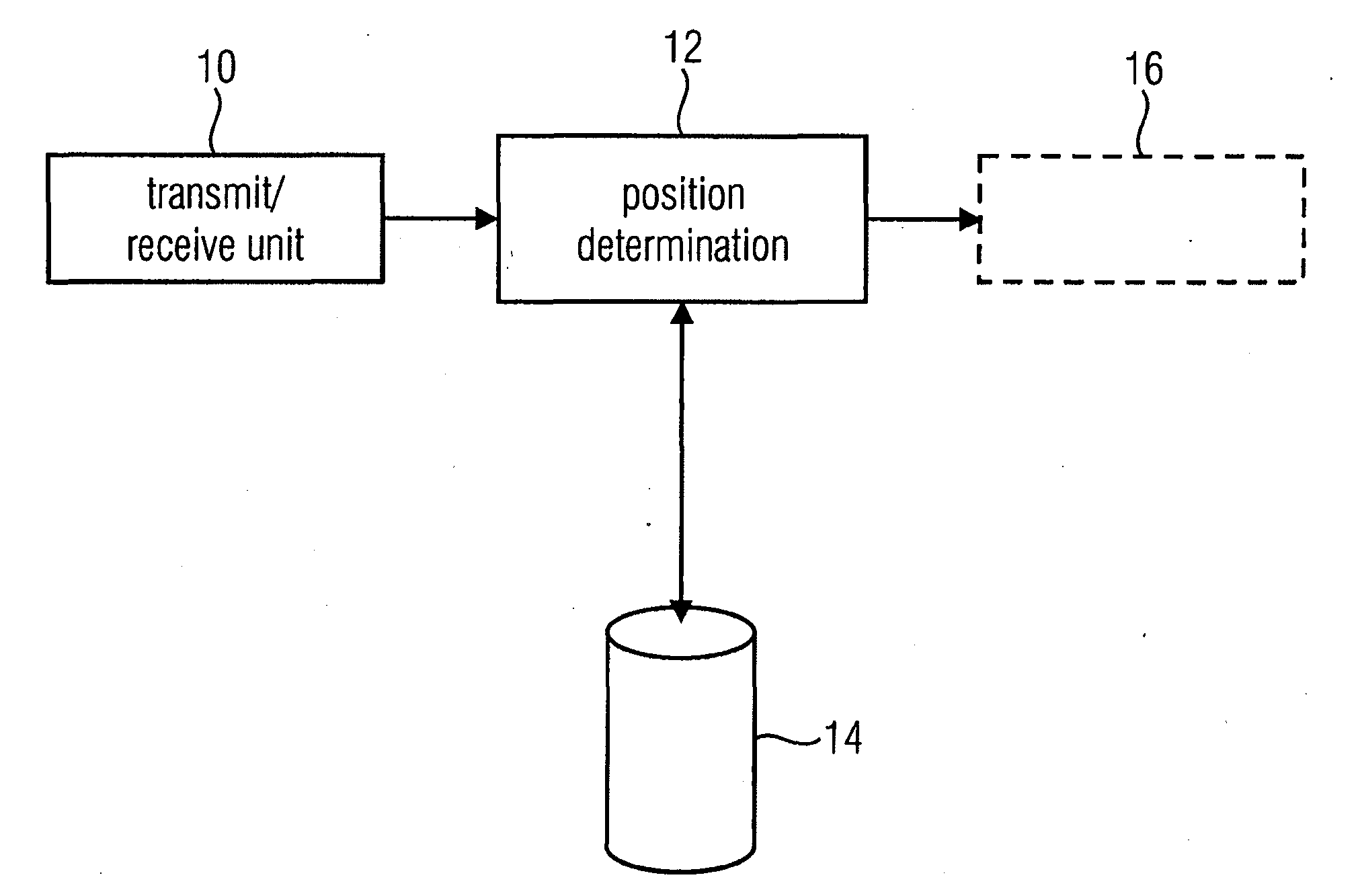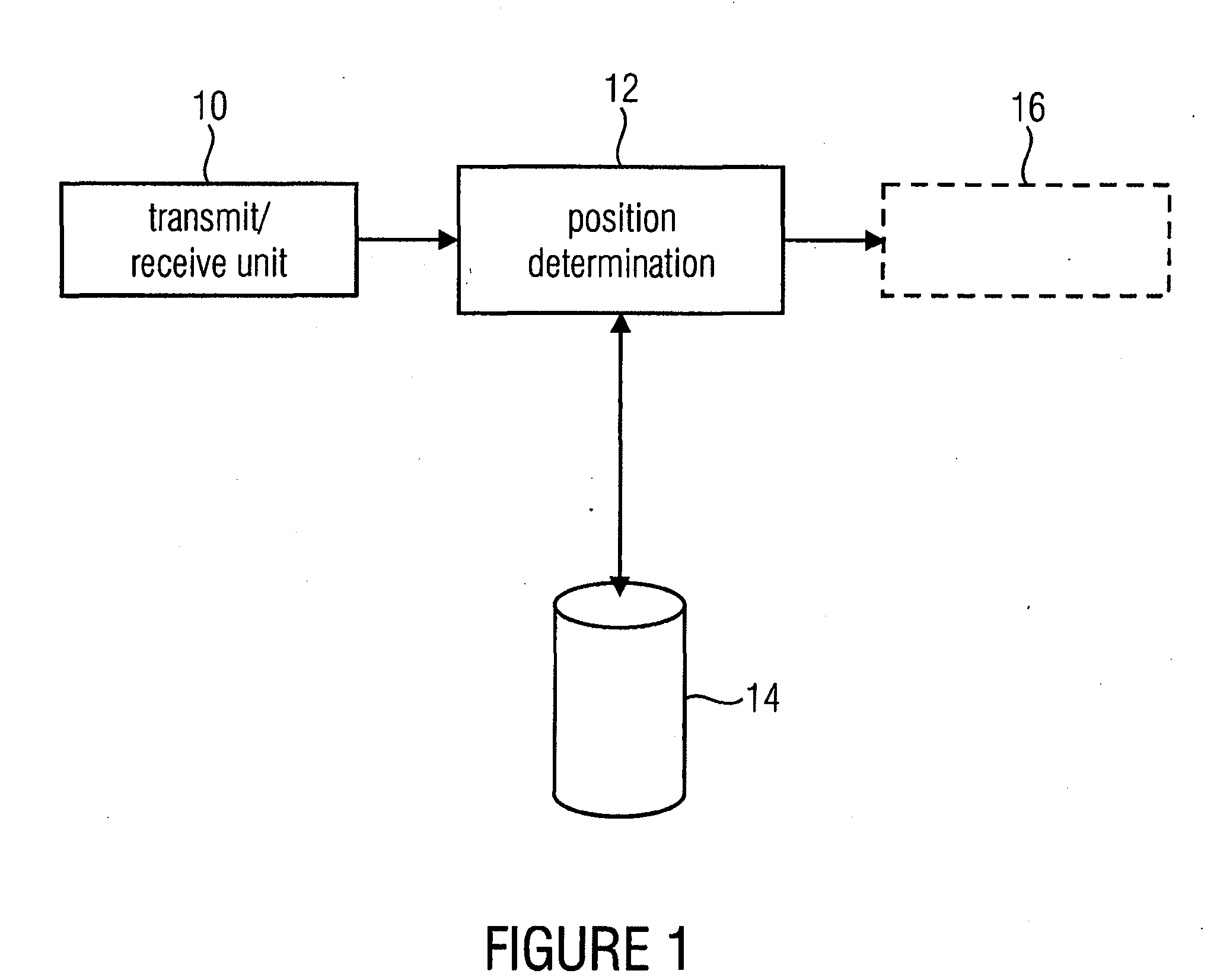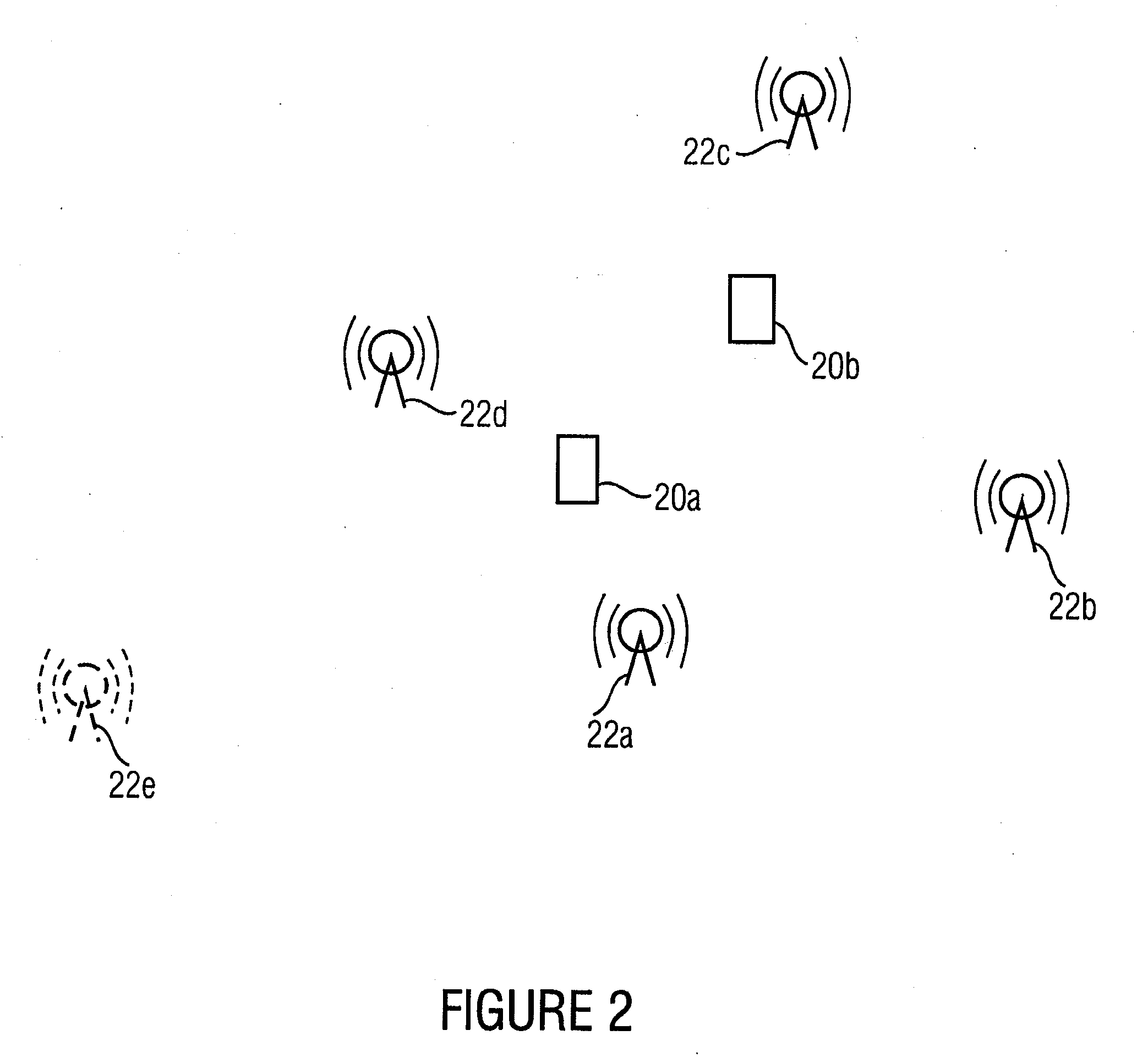Device and Method for Localizing Terminal Devices
a terminal device and device technology, applied in the field of devices and methods for localizing terminal devices, can solve the problems of virtually exhaustive supply, reduced expressiveness of reference data, and inability to provide a position, so as to increase the reliability of reference data, reduce data traffic, and provide a very fast update of reference data in the surroundings.
- Summary
- Abstract
- Description
- Claims
- Application Information
AI Technical Summary
Benefits of technology
Problems solved by technology
Method used
Image
Examples
Embodiment Construction
[0039]With reference to FIGS. 1 and 2, in the following, a location or position finding, respectively, according to the fingerprinting method is briefly described to motivate the inventive concept which is explained in more detail with reference to FIGS. 3 to 8.
[0040]Here, in particular, the fact is taken into account that the increasing distribution of non-public WLAN stations meanwhile leads to a clear excessive coverage in many cities. Often, in one single place, 8 to 12 stations (access points) may be received, wherein in the inner city area a number of receivable stations of 30 may even be exceeded (peak values in busy places or areas of high living or population density).
[0041]For a secure and accurate location generally already three to four stations are sufficient.
[0042]FIG. 1 illustrates how the location of a mobile terminal device may be realized by means of fingerprinting (WLAN, GSM, Bluetooth, WIMAX, etc.) in the public area as a self-localization of every individual mob...
PUM
 Login to View More
Login to View More Abstract
Description
Claims
Application Information
 Login to View More
Login to View More - R&D
- Intellectual Property
- Life Sciences
- Materials
- Tech Scout
- Unparalleled Data Quality
- Higher Quality Content
- 60% Fewer Hallucinations
Browse by: Latest US Patents, China's latest patents, Technical Efficacy Thesaurus, Application Domain, Technology Topic, Popular Technical Reports.
© 2025 PatSnap. All rights reserved.Legal|Privacy policy|Modern Slavery Act Transparency Statement|Sitemap|About US| Contact US: help@patsnap.com



